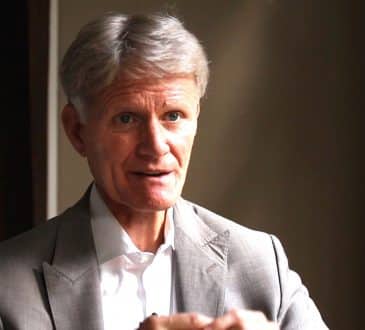Driving Innovation in Traditional Industries: Strategies for the Modern Business Leader

Innovation is the cornerstone for progress in any field. All breakthrough inventions in industrial and economic domains have been born out of innovation. Traditional industries have proven instrumental in the development of today’s robust modern business landscape. However, history reminds us that no matter how innovative one might be, that alone doesn’t guarantee perpetual success. Let us consider the example of Kodak. Once upon a time Kodak dominated the photography market and is known to have invented the digital camera of today. However, failure to capitalize on its homebred innovation led the company eventually to file for bankruptcy. Another telling example is that of Nokia, a giant and forerunner in mobile communications technology. The company lost its dominance to competitors who adapted more swiftly to changing markets.
Kodak and Nokia serve as cautionary reminders that creating something revolutionary is not enough. Modern business leaders should ensure their organizations evolve alongside technological and market trends to remain competitive. It is essential to accept and amalgamate modern strategies within one’s business. The mindset harboring continuous learning should be inculcated among traditional industries. New avenues should be opened up to innovate and thrive in today’s dynamic economy.
Traditional Industries and the Modern Leader
With the maturity of the digital revolution, paradigm technological shifts such as the advent of the internet or smartphones have become rarer. Traditional industries face the challenge of creating the next big invention by revamping leadership and innovation. New generation leaders must not continue the ‘stick to what you know’ mentality. They must realize that not giving a chance to newer ideas will stifle creativity.
As a report states, large companies struggle to find their footing in innovation owing to ingrained systems, risk-averse mindsets, and bureaucratic inefficiencies. Under such circumstances, it is important to be a visionary leader who welcomes experimentation and encourages diverse perspectives. These kinds of leaders ensure a steady investment in talent development which ultimately unlocks groundbreaking ideas and transforms their industries.
The right leader gathers the right team, and together they can shift a company’s perspective and inspire breakthroughs, no matter how established the sector is. Traditional industries can be turned into a hotbed of innovative ideas under such leadership.
What is a Modern Business Leader?
Modern business leaders exhibit certain qualities that differentiate them from traditional leaders. They are adaptable and inclusive, with a commitment to growth. They do not rely solely on hierarchical decision-making. They aim to harbor a spirit of collaboration and open communication within their teams. Every team member becomes an asset with exemplary strength which can be honed. Modern leaders create a diverse culture where ideas grow and thrive.
Another telling characteristic of modern leaders is their intellectual curiosity. They focus on talent development. They are continuously learning and adapting. They build their skill sets to meet evolving market demands and growth. This particular mindset not only nourishes their capabilities but also inspires their teams to embrace learning and development. Along with this they prioritize employee well-being and recognize that a motivated and supported workforce is more likely to spearhead innovation.
In essence, the modern leader creates an environment where creativity and collaboration go hand in hand. This is how traditional industries stay relevant and competitive in the market.
Adapting to the Modern Business
It is very important to adopt strategies that keep emotional intelligence at the forefront while leading traditional industries. Along with this, there must be continuous learning and decision-making driven by technology. Here are some practical ways to achieve this:
Prioritize Emotional Intelligence:
Modern leaders must know the value that empathy and emotional intelligence brings in building strong, productive teams. When employees feel they have a voice in an organization, that their concerns are being heard, they are naturally more invested in the organization’s goals. When leaders recognize and address their employees’ needs, they foster a supportive workplace culture– a kind of culture that generates an innovative mindset.
Embrace Continuous Learning:
A culture of continuous learning starts at the top. If a change must occur in the existing system, so be it. Leaders should stay informed about industry trends and evolving consumer needs. They should not be afraid to make changes when needed to accommodate learning. For example, JP Morgan CEO Jamie Dimon criticized annual shareholder meetings as redundant and suggested scrapping chair titles, emphasizing the equal importance of lead directors in board operations.
Leverage Technology for Data-Driven Decisions
Using data analytics, businesses can move towards making informed decisions. As a result, it becomes easy to identify areas for innovation. For example, it is an intelligent decision to use predictive analytics that can reveal market trends or customer preferences. Once companies get to know this, they can curate their strategies. It is quite possible to drive sustainable growth and augment decision-making.
The Importance of Sustainable Growth
It is necessary to balance short and long-term goals. This leads to lasting innovation. Modern leaders should lay more stress on sustainable practices that deliver immediate results along with building a foundation for future success. This is what enables traditional industries to remain relevant and competitive.
Driving Change in Traditional Industries
Traditional industries can innovate by adopting new methods and fostering a collaborative culture. Two key strategies for driving change include:
The Agile Technique:
The Agile Technique, originally developed for software development, focuses on iterative progress, collaboration, and flexibility. When projects are broken into pocket-sized tasks, they become manageable and doable. For example, a team may divide a larger development project into smaller, more digestible steps such as planning, designing, developing, testing, deploying and reviewing. By parsing a task into manageable steps, teams develop the bandwidth to adapt quickly to changes and deliver results more efficiently. Agile practices can help traditional setups by streamlining operations, improving productivity, and encouraging innovation.
Collaboration and Inclusivity
Collaborating and harboring inclusivity can make a workplace culture unlock creative potential across an organization. When employees are given platforms to share their ideas, innovation stems from unexpected sources. Encouraging diverse perspectives can enrich decision-making and help identify opportunities to usher in growth.
Conclusion
Traditional industries have immense potential to drive innovation. All it requires is a shift in mindset and approach. Modern business leaders are an important cog in the machinery. Their approach towards a collaborative, inclusive, and growth-oriented perspective can turn the tides in their favor. Leaders can inspire their teams to break new ground with emotional intelligence and inclusivity.
Innovation isn’t always something new. It can also mean reimagining existing processes and technologies to create value. All it needs is the right leadership and strategies for traditional industries to thrive in the modern business landscape.
Written by Gregory Knox Jones.
Have you read?
Countries with the most gold reserves.
World’s Best Public Relations Agencies (Top PR Firms).
Countries with the highest human freedom.
World’s Safest & Most Dangerous Countries For Travelers.
Longest and Shortest Life Expectancies in the World.
World’s Most And Least Stressed Countries.
Bring the best of the CEOWORLD magazine's global journalism to audiences in the United States and around the world. - Add CEOWORLD magazine to your Google News feed.
Follow CEOWORLD magazine headlines on: Google News, LinkedIn, Twitter, and Facebook.
Copyright 2025 The CEOWORLD magazine. All rights reserved. This material (and any extract from it) must not be copied, redistributed or placed on any website, without CEOWORLD magazine' prior written consent. For media queries, please contact: info@ceoworld.biz








